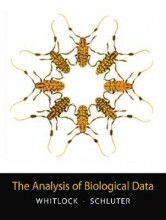Describing data - Arithmetic mean and standard deviation
8 important questions on Describing data - Arithmetic mean and standard deviation
What is the relationship between the variance and the standard deviation?
Most observations of the sample are far away from the mean, is the sd large or small?
Why would the variance be used, when the sd is a more intuitive measure?
- Higher grades + faster learning
- Never study anything twice
- 100% sure, 100% understanding
Why is the average of the spread of a distribution not he the same as average of deviations?
Why should the deviations be squared to find the variance?
How can the relationship between the sd and the frequency distribution be decribed in terms of percentage of observations that lies within x standard deviations?
- 95% of the observations lies within 2 sd.
- 67& of the observations lies within 1 sd.
What does the coefficient of variation (CV) calculate? How?
The sd as a percentage of the mean
What type comparison of data can CV be used for?
The question on the page originate from the summary of the following study material:
- A unique study and practice tool
- Never study anything twice again
- Get the grades you hope for
- 100% sure, 100% understanding































